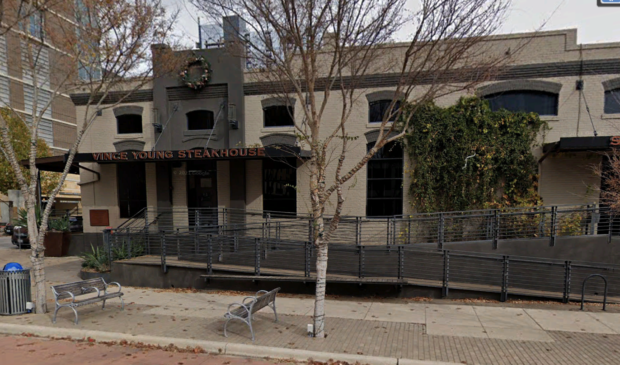Council takes first vote to declare warehouse historic
Friday, February 4, 2022 by
Jo Clifton On a vote of 7-2-2, City Council on Thursday approved on first reading a request for historic zoning for the property at 301 San Jacinto St. downtown. Council members Pio Renteria and Paige Ellis voted no and Greg Casar and Vanessa Fuentes were off the dais.
Will Houston, the managing partner for the owner, initially told Council he objected to the historic designation for the Nalley-Shear-Bremond warehouse. Designating a building historic over the objections of the owner requires nine votes on the third and final reading.
During a recess that allowed Mayor Steve Adler to take a phone call, Houston agreed to talk to city staff over the next two weeks to see if they can reach an agreement about the building’s future. Council Member Kathie Tovo, whose district includes the downtown area, suggested that the city might be able to transfer some development rights to work with Houston.
The current tenant of the building, Phillip Brown, owner and operator of the Vince Young Steakhouse, wrote to express his support for the historic marker. Arguing against the wishes of his landlord, Brown wrote, “as our landlord hopes to destroy a century-plus old building to make way for more concrete and glass, it seems as if downtown is losing its soul one building at a time. We need to preserve the few original places we have left and not push out small family-owned businesses that are the true fabric of the city and help ‘Keep Austin Weird.'”
Elizabeth Brummett of the city’s Historic Preservation Office told Council the building is a good example of a utilitarian structure with very few alterations. The one-story warehouse was constructed in 1912 for the Nalley Grocery Company and continued to be used as a warehouse at least through the 1970s. According to Brummett’s research, the building was sold to the John Bremond Company around 1923.
Brummett noted that Paul Bremond, John’s brother, is credited with helping to bring the railroad to Austin. She noted in her written evaluation that the railroad “was a game changer for the city, allowing for the importation of the huge number of manufactured and cultivated items, everything from building materials to fabrics to home furnishings and food. The railroad transformed Austin from a settlement to a city, and it was firms like Nalley, Shear and John Bremond that brought the urbanizing influence of foods to the burgeoning city. The building represents a significant chapter in the history of the development of Austin as a city.”
The Bremond name is well known in Austin because of the historic Bremond block, a group of 11 houses owned by various members of the Bremond family and found on Seventh, Guadalupe and San Antonio streets. According to CultureTrip.com, the Victorian-style homes were all built between 1850 and 1910 and are a good example of an upper-class neighborhood of the era.
Houston told Council his great-grandfather was John Bremond. His grandfather and his partner operated a dry goods store at Sixth and Brazos “and became Austin’s first bankers when they began taking credit.” John Bremond became a wholesale grocer and the owner of the building at 301 San Jacinto.
Houston also said that when the city proposed to expand the convention center to the north, which would have eliminated this building, the question of its historic value “never came up.” Later, in response to a question from Tovo, Brummett said she was not at the city during those discussions and zoning manager Jerry Rusthoven said he did not think the Historic Preservation Office was ever asked its opinion on the matter.
Houston’s attorney, Richard Suttle of Armbrust and Brown, told Council his client was not interested in the historic designation and argued that the building did not qualify except for the fact that it is more than 50 years old. He downplayed its historic value and the quality of its workmanship. Suttle said his client wants to transform the block into a transit-oriented development, but added that he would be interested in hearing about the transfer of development rights mentioned by Tovo.
The Historic Landmark Commission recommended historic zoning on the basis of architecture, historical associations and community value. The Planning Commission, on the other hand, voted against recommending the historic landmark.
The Austin Monitor’s work is made possible by donations from the community. Though our reporting covers donors from time to time, we are careful to keep business and editorial efforts separate while maintaining transparency. A complete list of donors is available here, and our code of ethics is explained here.
You're a community leader
And we’re honored you look to us for serious, in-depth news. You know a strong community needs local and dedicated watchdog reporting. We’re here for you and that won’t change. Now will you take the powerful next step and support our nonprofit news organization?



